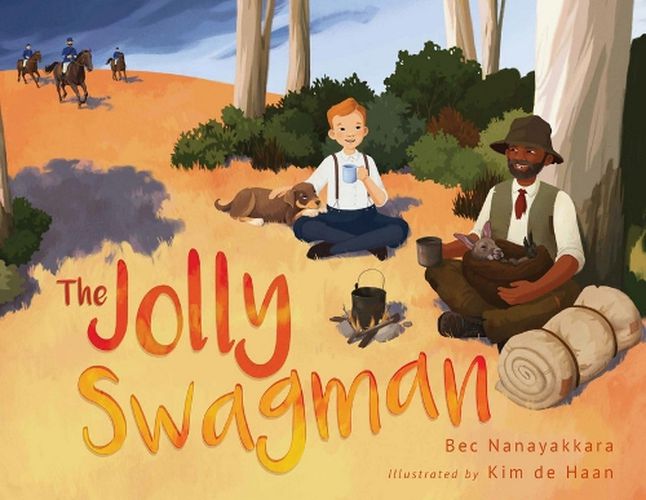The Jolly Swagman by Bec Nanayakkara. Illus. by Kim de Haan

A story which parallels the poem by Banjo Patterson, Waltzing Matilda, written in 1895 when swagmen were a common sight on the back roads of Australia, will appeal to younger readers eager for more knowledge of Australian myths and stories.
In this story, Ollie, the swagman is a regular visitor to the station where this young boy, Will lives. Ollie and the boy have a close relationship, Ollie teaching Will of things within his culture, when he comes each year at shearing time. Will dreams of being a swagman and watches Ollie closely. At night the boy is astounded to see Ollie care for the sick and injured animals, and is taught the names these animals have.
When the troopers come to the farm looking for Ollie, convinced he has stolen a sheep, Will defends his friend, telling the men that Ollie has taken the wounded sheep to tend to its injuries. He is not believed and can do little, and Ollie is never seen again. But Will keeps on learning about his environment, often putting his swag on his back and going off to the bush.
The line, ‘come a waltzing Matilda with me’ is taken at its broadest meaning, that of inviting people to ‘come walking with me’, so Will invites the readers to come and see what the environment is like, to tread its paths, to see its animals, to be part of the land.
And the swagman Ollie is seen in a different light than that given in the poem, here is of a man who needs to tramp the countryside in search of work and keep himself going. These people, like today’s homeless, need our support.
A neat introduction to the Australian classic poem and song, this book gives a new background to the story and shows the swaggie in a different light. Kids will be eager to read the original and compare the differences, and find out which Aboriginal language is referenced in Ollie’s animals.
Themes: Australian mythology, Australian classics, Swagmen, Australian bush life.
Fran Knight